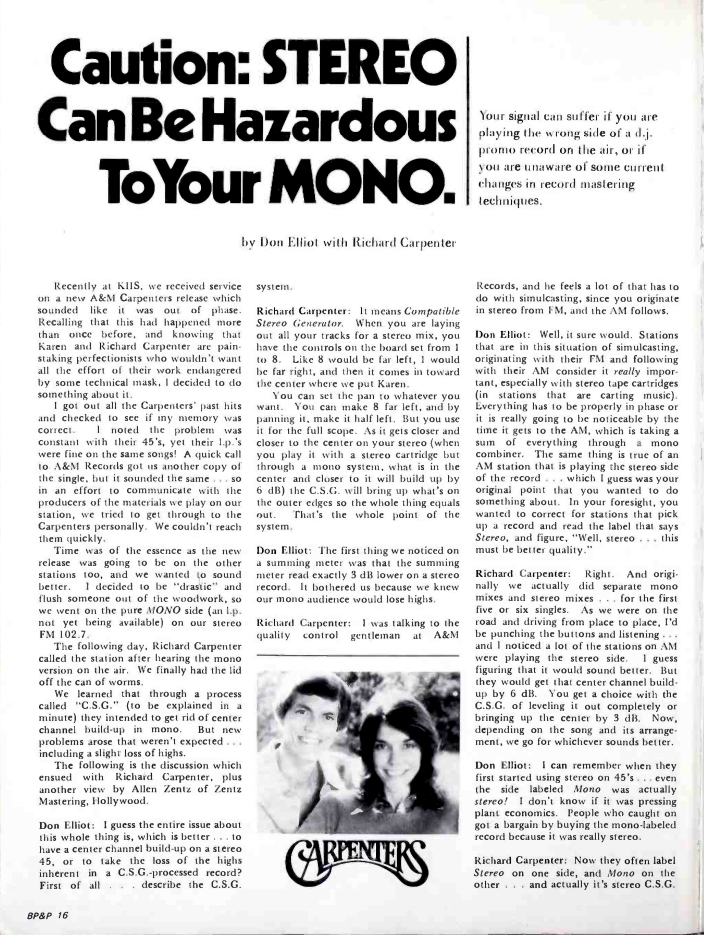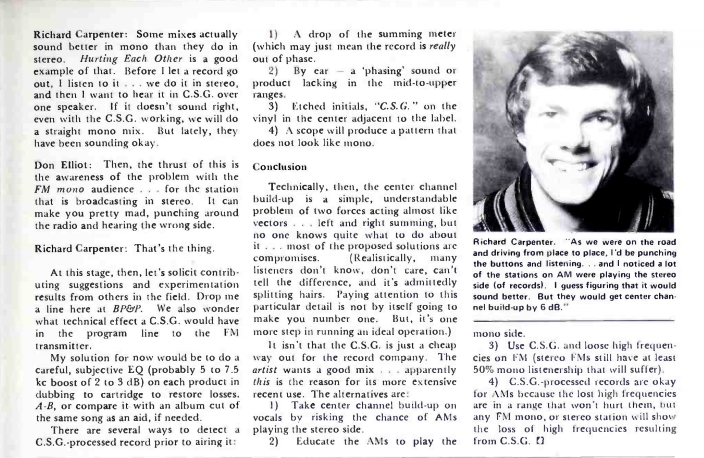Rick-An Ordinary Fool
Well-Known Member
What a fascinating article, I'd really like to hear from Harry, Rudy and Chris on this one...
Caution: Stereo Can Be Hazardous To Your Mono
Don Elliot and Richard Carpenter
Broadcast Programing & Production Magazine Nov 1976



Caution: Stereo Can Be Hazardous To Your Mono
Don Elliot and Richard Carpenter
Broadcast Programing & Production Magazine Nov 1976









